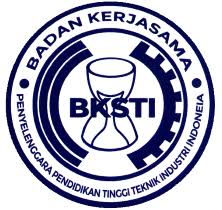Analisis Penjadwalan Pembuatan Heat Exchanger Menggunakan Critical Path Method
DOI:
https://doi.org/10.30656/intech.v2i1.860Keywords:
Critical Path Method, Planning, SchedulingAbstract
The problem that often occurs in manufacturing companies is that companies sometimes experience delays in project completion. One of the factors that caused delays was that the company still randomly carried out any activities that took precedence over the process. With these problems, causing losses that are not good for both the implementer and the project owner. This will also have a negative impact on the company, including worsening the image of companies that seem unable to complete the project according to the agreed contract. This study aims to determine which activities in the critical path for initial conditions and acceleration, to know the difference in processing time from the initial conditions and the acceleration conditions, to know the difference in processing time from the initial conditions and the acceleration conditions, and to know the benefits of project costs which occurs between initial conditions and conditions after acceleration. This study uses the Critical Path Method method to determine the determination of the schedule and the estimated time is deterministic / definite and determine which activities are considered critical paths with the duration of this project for 192 working days. Based on the results of research critical activities in the initial conditions with 192 days. While for acceleration conditions, the completion time is 182 days with 2 critical trajectories which includes 17 production activities which all activities enter critical crossings. The optimal duration of the project is 182 days with a total project cost of Rp.900,000,000 on the alternative to adding overtime hours.
Downloads
References
Briliawan, A., & Wijaya, A. R. (2015). Evaluasi Ketidaksesuaian Antara Waktu Aktual Dan Waktu Rencana Perawatan Turbin Gas Tipe CFM Untuk Pesawat Boeing 737-300 Dengan Menggunakan Metode Network Planning (Studi Kasus PT Garuda Maintenance Facility Aeroasia). Yogyakarta: Jurusan Teknik Industri, Universitas Gadjah Mada.
Kelana, R. P. (2010). Optimalisasi Penggunaan Sumber Daya Manusia dengan Metode Resources Levelling Menggunakan Bantuan Microsoft Project 2007 (Studi kasus Proyek pembangunan Gedung R. Kuliah dan Perpustakaan PGSD Kleco FKIP UNS). Solo: Jurusan Teknik Sipil Fakultas Teknik, Universitas Sebelas Maret.
Santoso, B. (1997). Manajemen Proyek. Edisi Pertama. Jakarta : PT. Guna Widya.
Soeharto, I. (1995). Manajemen Proyek dari konseptual sampai operasional. Jakarta: Erlangga.
Sugiyarto, S., Qomariyah, S., & Hamzah, F. (2013). Analisis network planning dengan cpm (critical path method) dalam rangka efisiensi waktu dan biaya proyek. Matriks Teknik Sipil, 1(4), 408–416.









.png)
.png)
.png)



.png)

.png)
